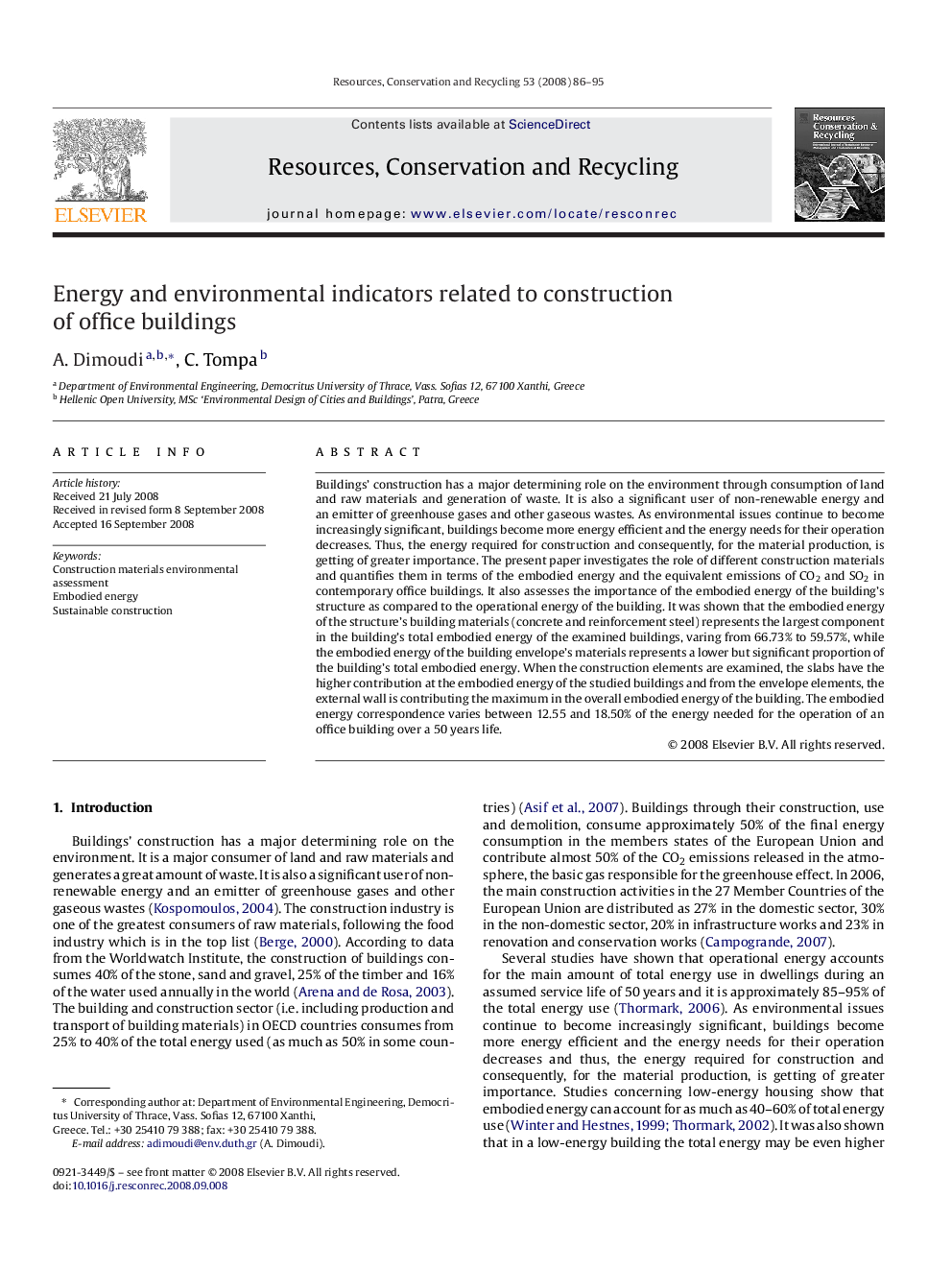| Article ID | Journal | Published Year | Pages | File Type |
|---|---|---|---|---|
| 1063703 | Resources, Conservation and Recycling | 2008 | 10 Pages |
Buildings’ construction has a major determining role on the environment through consumption of land and raw materials and generation of waste. It is also a significant user of non-renewable energy and an emitter of greenhouse gases and other gaseous wastes. As environmental issues continue to become increasingly significant, buildings become more energy efficient and the energy needs for their operation decreases. Thus, the energy required for construction and consequently, for the material production, is getting of greater importance. The present paper investigates the role of different construction materials and quantifies them in terms of the embodied energy and the equivalent emissions of CO2 and SO2 in contemporary office buildings. It also assesses the importance of the embodied energy of the building's structure as compared to the operational energy of the building. It was shown that the embodied energy of the structure's building materials (concrete and reinforcement steel) represents the largest component in the building's total embodied energy of the examined buildings, varing from 66.73% to 59.57%, while the embodied energy of the building envelope's materials represents a lower but significant proportion of the building's total embodied energy. When the construction elements are examined, the slabs have the higher contribution at the embodied energy of the studied buildings and from the envelope elements, the external wall is contributing the maximum in the overall embodied energy of the building. The embodied energy correspondence varies between 12.55 and 18.50% of the energy needed for the operation of an office building over a 50 years life.
